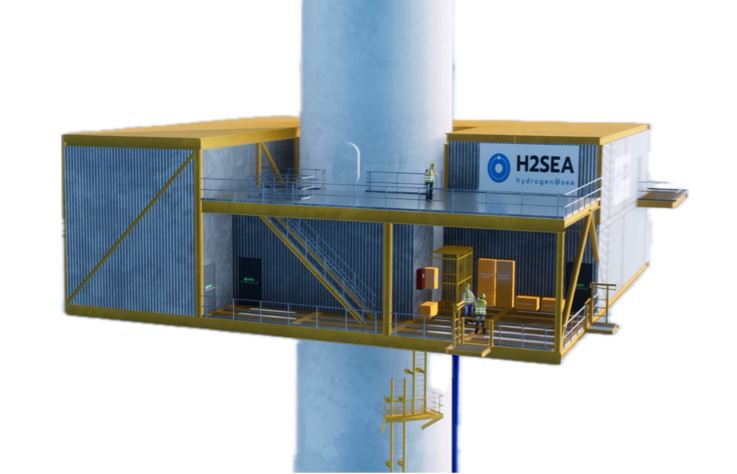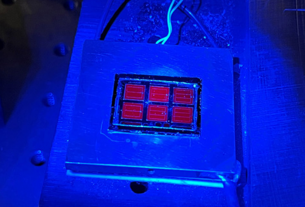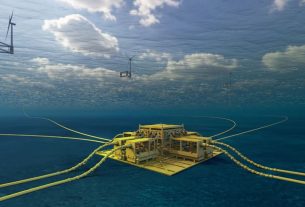The Netherlands – In a collaboration with Delft University of Technology, H2SEA has undertaken a structural assessment focused on monopile-based support structures for offshore Wind Turbine Generators (WTGs) with integrated hydrogen production capabilities.
The primary objective of this research was to delineate the disparities in support structure geometry and evaluate the modifications required in the design methodology of an offshore wind turbine support structure. Crucially, this assessment included the integration of a decentralized hydrogen production platform. Anticipating future developments, the study centered on a 15 MW reference turbine, positioned at a water depth of 45 meters in the F3 sector of the North Sea.
To derive platform mass, dimensions, and rotational inertia, a meticulous selection of all necessary systems was made. An optimized platform layout and mass estimation were then determined. The design of the platform support beams factored in gravitational loads and extreme wind gust loads. The choice of the support structure concept was facilitated through a multi-criteria analysis.
Dynamic modeling
For fatigue assessment, an analytical fully dynamical model was constructed using Maple. This model incorporated equations of motion considering airy wave force, rotor damping, topside and platform mass, rotational inertia, embedded length, and homogeneous soil stiffness. The Maple model played a pivotal role in simulating the dynamic behavior of both structures. It facilitated the determination of the first and second natural frequency, presenting displacements and overturning moments in these two mode shapes.
In the final stages of the assessment, a fatigue damage calculation was executed, encompassing 500 combinations of wave height and period. This analysis was conducted to project the structural integrity over a 25-year lifespan, a critical parameter in the lifecycle of offshore installations.




